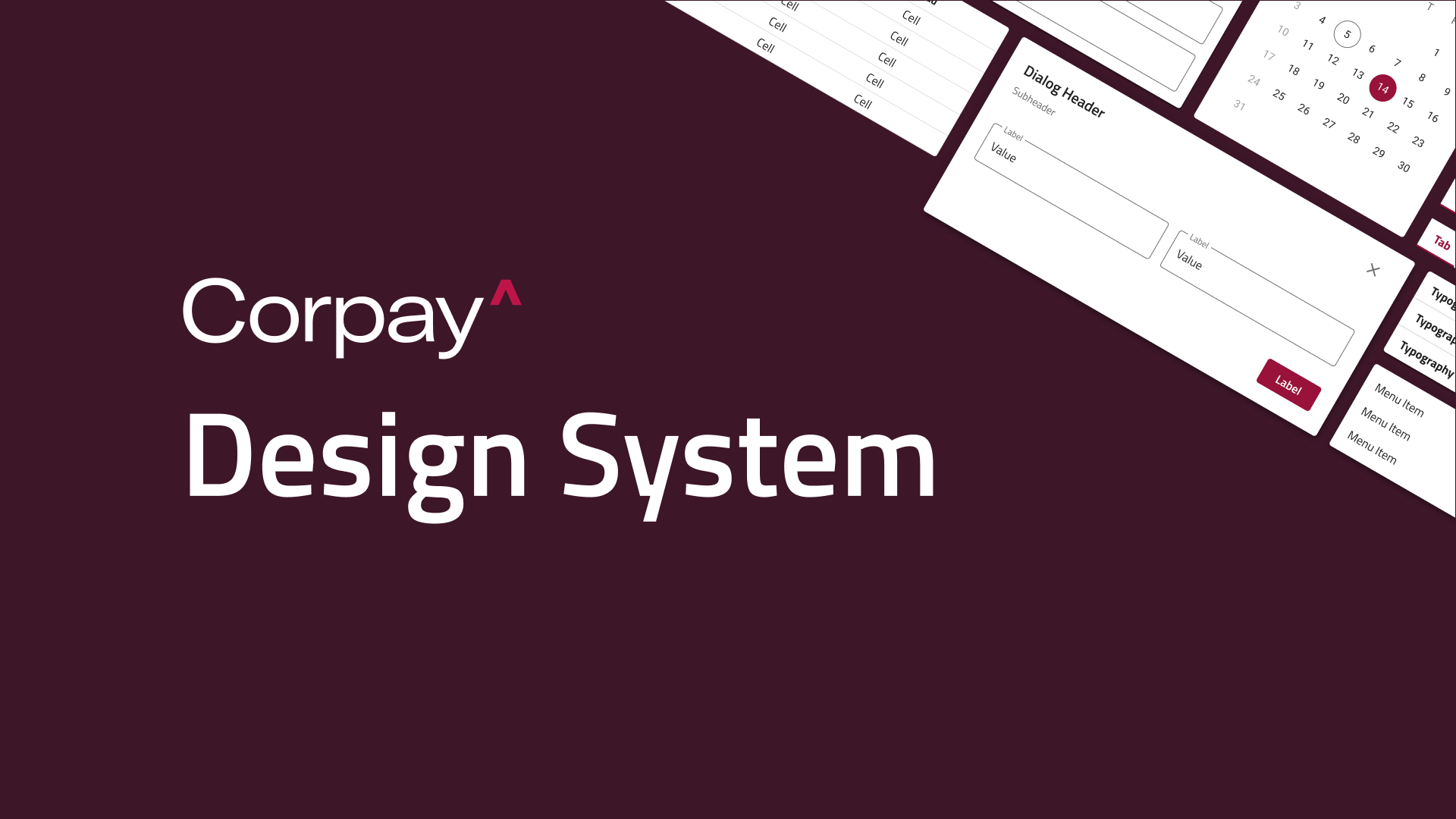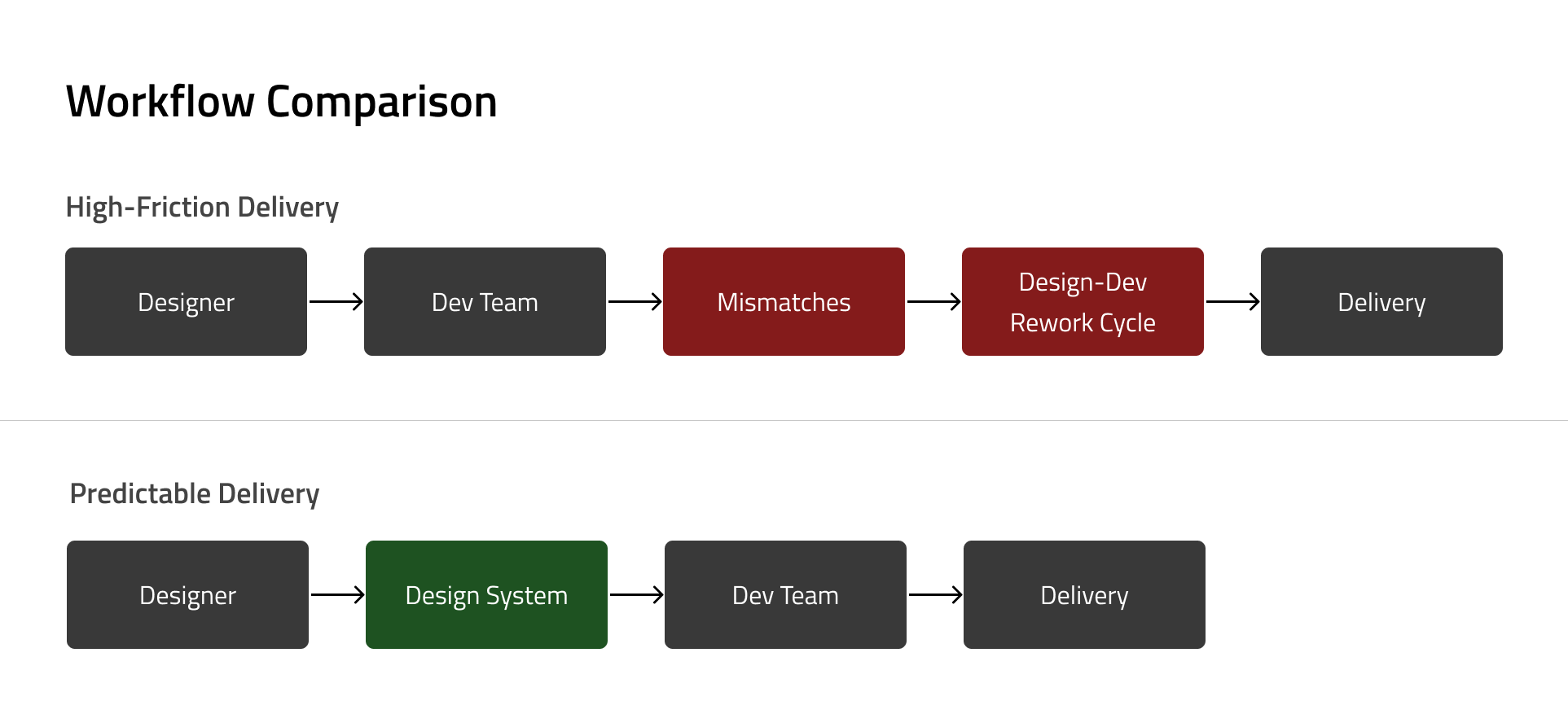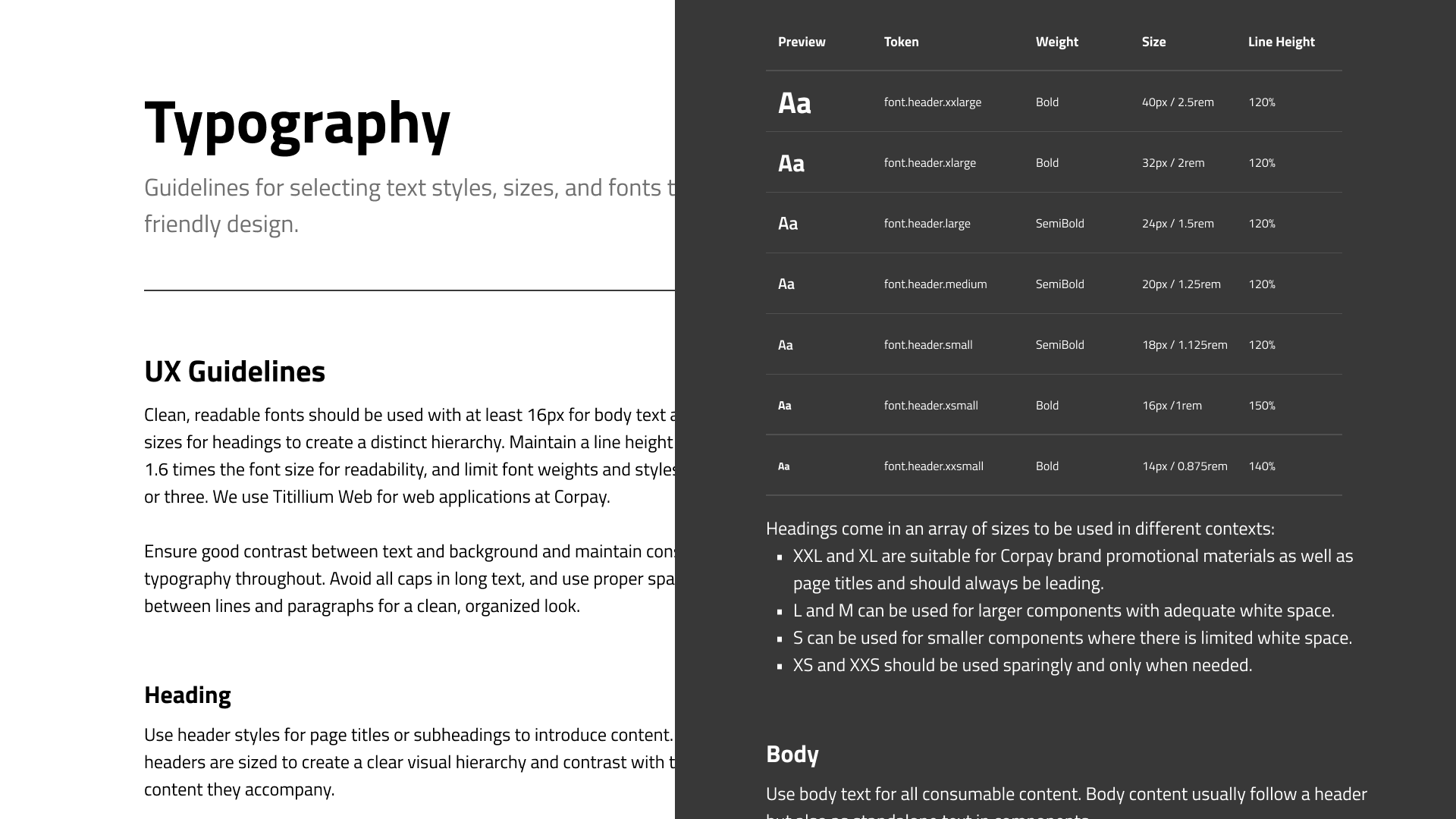
Corpay’s rapid product expansion led to fragmented UI patterns, uneven interaction models, and duplicated components across teams. Designers recreated elements repeatedly, engineers built screens from scratch, and features often shipped with visual drift. The workflow can only be described as high-friction and often resulted in delayed delivery. I led the creation of Corpay Cross-Border's first unified design system that would serve as the single source of truth, standardizing patterns, reducing ambiguity, and enabling scalable product growth.

As the sole design team serving multiple dev teams, decisions were often made in silos. We needed a design system to be a single source of truth. It aligned teams on patterns, reduced implementation gaps, and enabled scalable workflows across Corpay’s Cross-Border platform, delivering measurable improvement:


I defined the full component architecture, created foundations and delivered documented usage guidelines that supported both product designers and engineers. The system now powers key product experiences from reporting tools to risk management workflows with consistent layouts, spacing, states, and interactions.
One of my favourite examples of improvement: A fully modular data table built from design-system components. Each cell, row, and interaction pattern is reusable and configurable, allowing teams to easily adjust size, add editing or selection states, and support new functionality without rebuilding tables from scratch.

If you like what you see and want to work together, shoot a message to the email below.
ptr.khp@gmail.com